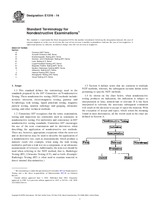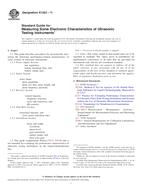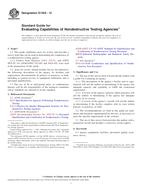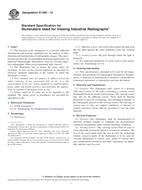We need your consent to use the individual data so that you can see information about your interests, among other things. Click "OK" to give your consent.
ASTM D7026-13
Standard Guide for Sampling and Reporting of Results for Determination of Biobased Content of Materials via Carbon Isotope Analysis (Withdrawn 2020)
Automatically translated name:
Standard Guide for Sampling and Reporting of Results for Determination of Biobased Content of Materials via Carbon Isotope AnalysisSTANDARD published on 1.4.2013
The information about the standard:
Designation standards: ASTM D7026-13
Note: WITHDRAWN
Publication date standards: 1.4.2013
SKU: NS-37338
The number of pages: 4
Approximate weight : 12 g (0.03 lbs)
Country: American technical standard
Category: Technical standards ASTM
The category - similar standards:
Annotation of standard text ASTM D7026-13 :
Keywords:
biobased, radioisotope authentication, sampling, ICS Number Code 19.100 (Non-destructive testing)
Additional information
| Significance and Use | |
|
4.1 The carbon isotope analysis is designed to be an adjunct to other information in determination of biobased content, specifically the manufacturer’s records. It is also a means of verifying the authenticity of a disputed lot of material which may be manufactured by different means, from different raw materials. FTIR or other chemical analysis means will identify the molecule as being ethanol, but not give indication of the source (that is, fossil carbon versus modern carbon). The carbon isotopes will give both indication of source and the presence of a mixture of sources. 4.2 Representative sampling and handling methods are clearly a prerequisite to obtaining accurate results from the radiocarbon composition determination and any other quantitative analytical method. 4.3 This guide provides for accurate and complete reporting of the sample collection, handling, chain of custody, sample preparation and treatment that allows any independent party to assess the validity of the reported biobased content of the material. |
|
| 1. Scope | |
|
1.1 This guide provides a framework for collecting and handling samples for determination of biobased content of materials by means of the carbon isotope method described in Test Methods D6866. Tests for sampling adequacy based on the standard statistical tools are provided. In addition, reporting of the results, including sampling techniques and handling procedures and chain-of-custody issues are discussed. 1.2 This guide is concerned with collecting representative samples within a given material or a lot, not with lot-to-lot variations such as considered in quality control schemes. 1.3 Biobased materials often represent sampling problems specific to a given material, such as heterogeneity, and so forth, which require employment of material-specific sampling methods. The use of specialized sampling methods already accepted and validated by industries that manufacture and/or use the biomaterial is encouraged. However, all sampling techniques, especially non-standard techniques developed for specific materials must be reported in sufficient detail to allow critical assessment of the techniques used. 1.4 Carbon isotope analysis involves thermal processing in presence of oxidants. Compatibility of any given material with Test Methods D6866 must be assessed. Special attention must be given to materials with potential for explosion hazards, such as peroxides, nitrated compounds, azides, and so forth. Examples of peroxide-forming compounds are ethers, some ketones and a number of other compounds. 1.5 The values stated in SI units are to be regarded as standard. No other units of measurement are included in this standard. 1.6 This standard does not purport to address all of the safety concerns, if any, associated with its use. It is the responsibility of the user of this standard to establish appropriate safety and health practices and determine the applicability of regulatory requirements prior to use. | |
|
Standard Guide for Determination of Biobased Content, Resources Consumption, and Environmental Profile of Materials and Products (Withdrawn 2011) |
|
|
Standard Test Methods for Determining the Biobased Content of Solid, Liquid, and Gaseous Samples Using Radiocarbon Analysis |
|
|
Cramer, H., |
Elements of Probability Theory, Wiley & Sons, NY, 1961 |
|
Standard Practice for Calculating Sample Size to Estimate, With Specified Precision, the Average for a Characteristic of a Lot or Process |
|
|
Standard Guide for Probability Sampling of Materials |
Similar standards:
Historical
1.6.2014
Historical
1.8.2011
Historical
1.11.2012
Historical
15.6.2012
Historical
1.7.2009
Historical
15.6.2012
We recommend:
Technical standards updating
Do you want to make sure you use only the valid technical standards?
We can offer you a solution which will provide you a monthly overview concerning the updating of standards which you use.
Would you like to know more? Look at this page.



 ASTM E1316-14
ASTM E1316-14 ASTM E1324-11
ASTM E1324-11 ASTM E1359-12
ASTM E1359-12 ASTM E1390-12
ASTM E1390-12 ASTM E1411-09
ASTM E1411-09 ASTM E1495/E1495M-12..
ASTM E1495/E1495M-12..
 Cookies
Cookies
